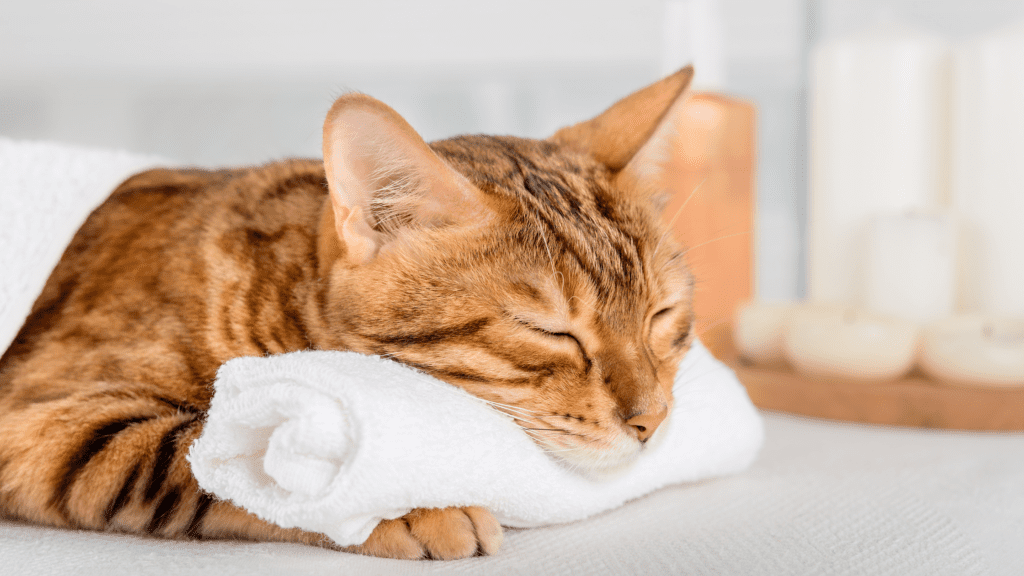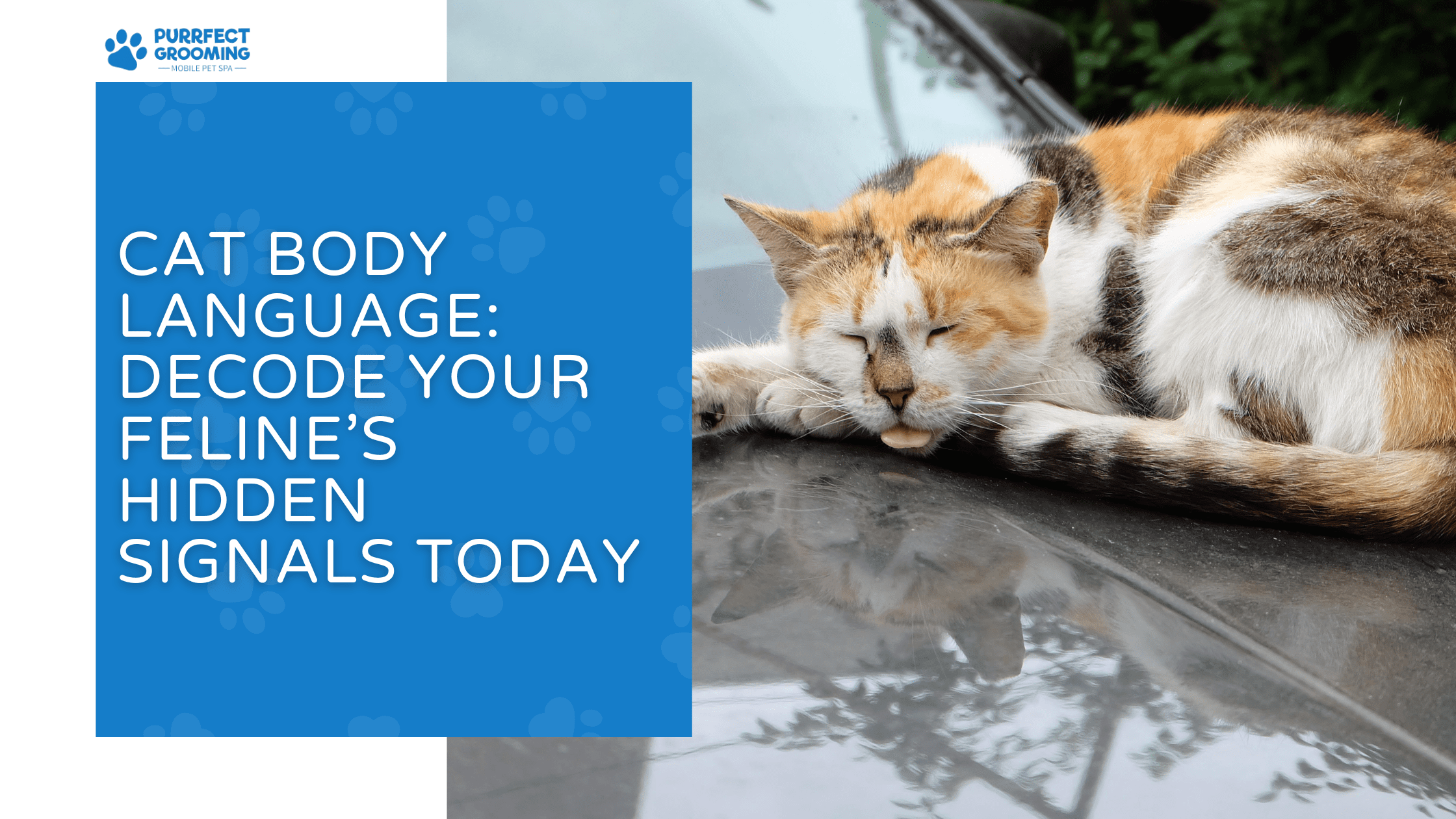Cat Body Language: Decode Your Feline’s Hidden Signals Today!
Cats have a unique way of communicating through body language, subtle movements, and vocal cues. Unlike dogs, who are more expressive, cats rely on non-verbal signals to express their emotions, needs, and intentions. If you’ve ever wondered what your feline friend is thinking, learning to read their cat body language is the key.
A study published in Animal Cognition found that cats use a combination of visual, vocal, and tactile signals to communicate with their human caregivers. Understanding cat behavior helps improve the bond between you and your pet, reducing misunderstandings and stress.

Why Understanding Cat Body Language Matters
Cats are independent creatures, but they form strong emotional connections with their humans. Learning their body signals helps in:
- Strengthening trust between you and your pet.
- Avoiding aggressive situations by recognizing warning signs.
- Identifying health issues through behavioral changes.
Misinterpreting kitty behavior can lead to unnecessary stress, scratches, or even bites. By paying attention to their feline body language, you can create a safer and happier environment for your cat.
Tail Movements: The Mood Indicator
A cat’s tail position and movement convey important emotional clues. Here’s how to interpret different tail positions:
What Different Tail Positions Mean
| Tail Position | Meaning |
| High and upright | Confidence, happiness, and friendliness. |
| Curled at the tip | Playfulness or mild curiosity. |
| Wrapped around another cat/human | Affection and bonding. |
| Tucked between legs | Fear, anxiety, or submission. |
| Puffed-up tail | Extreme fear, aggression, or feeling threatened. |
Why Do Cats Flick Their Tails?
- Gentle flicking → Focused or mildly annoyed.
- Fast, whipping movements → Frustration or irritation.
- Swishing side to side → A warning signal before potential aggression.
If your cat starts thrashing its tail, it’s best to give them space.
Ear Positions: The Hidden Emotion Detector
Cat ears are highly expressive and can rotate independently to pick up sounds.
How to Read Cat Ear Signals
| Ear Position | Meaning |
| Forward-facing ears | Curiosity, playfulness, and engagement. |
| Slightly turned to the side | Uncertainty or mild irritation. |
| Flattened backward | Fear, aggression, or defensive mode. |
| Twitching ears | Annoyance or sensory overload. |
If a cat’s ears are pinned back tightly, they might feel cornered or threatened.
Whiskers: More Than Just a Cute Feature
Whiskers help cats navigate their environment, but they also indicate mood.
- Relaxed whiskers → Content and calm.
- Pushed forward whiskers → Excitement or hunting mode.
- Pulled-back whiskers → Fear or distress.
Whisker fatigue occurs when their whiskers become overstimulated, causing a cat to avoid narrow spaces or deep food bowls.
Eyes: The Window to a Cat’s Soul
Decoding Pupil Changes
| Pupil Shape | Meaning |
| Narrow slits | Calm, focused, or aggressive intent. |
| Wide and dilated | Fear, excitement, or playfulness. |
| Slow blinking | Affection and trust. |
What Does a Slow Blink Mean?
A slow blink is a cat’s way of saying “I trust you.” If your cat slowly blinks at you, return the gesture—it helps strengthen your bond..
Vocalizations and Their Meaning
Cats meow primarily to communicate with humans, not other cats.
Types of Meows
- Short, soft meows → A friendly greeting.
- Long, drawn-out meows → A request for food or attention.
- Low-pitched meows → Displeasure or frustration.
Why Do Cats Purr?
- Soft purring → Happiness and relaxation.
- Loud, uneven purring → Possible pain or distress.
Kneading, Head-Butting, and Rubbing Against You
- Kneading (pushing paws in and out) → Comfort and contentment.
- Head-butting → Marking you as part of their territory.
- Rubbing against legs → Greeting or claiming ownership.
Body Posture and Its Hidden Messages
Relaxed vs. Defensive Posture
| Body Language | Meaning |
| Loose, stretched-out body | Feeling safe and relaxed. |
| Crouched with tail wrapped around | Defensive or nervous. |
| Arched back, fur standing up | Aggressive or scared. |
Sleeping Positions and What They Reveal
- Curled-up position → Warmth and security.
- Sleeping on their back → Deep trust in their surroundings.
- Sleeping with eyes partially open → Staying alert while resting.
Grooming Habits and Emotional State
- Excessive grooming → Anxiety or skin irritation.
- Mutual grooming → Social bonding.
- Lack of grooming → Possible illness or depression.
Hissing and Growling: Signs of Discomfort
- Hissing → Warning sign to stay away.
- Growling → Strong displeasure or territorial defense.
- Ears back + growling → The cat is ready to defend itself.
Quick Guide to Cat Body Language
| Behavior | Possible Meaning |
| Slow blinking | Affection and trust |
| Tail flicking | Annoyance or irritation |
| Purring | Contentment or pain |
| Head-butting | Marking territory and bonding |
| Arched back with puffed-up fur | Fear or aggression |
How to Respond to Cat Signals Correctly
- Respect their boundaries – If they flick their tail or growl, give them space.
- Return slow blinks – This strengthens trust.
- Recognize signs of stress – Excessive grooming or hiding may indicate anxiety.
- Avoid sudden movements – Sudden actions can make a cat feel threatened.
Conclusion
Deciphering feline body language enhances your relationship with your cat. By observing their tail, ears, whiskers, and posture, you can better understand their emotions and needs.
FAQs
1. Why does my cat flick its tail when I pet it?
It likely means overstimulation—stop petting for a while.
2. What does it mean when a cat rolls over?
It may be a sign of trust, but not necessarily an invitation for belly rubs.
3. Why does my cat follow me around?
Cats follow their owners for companionship or food reminders.
4. Is purring always a sign of happiness?
Not always—cats also purr when in pain.
5. How can I make my cat feel more comfortable?
Provide a calm environment, routine meals, and respect their space.
